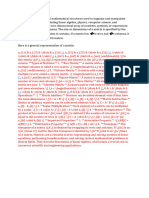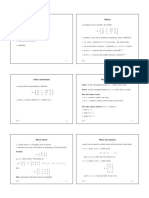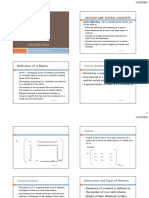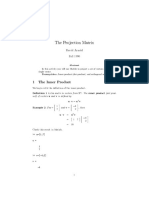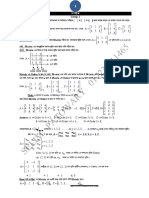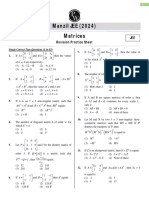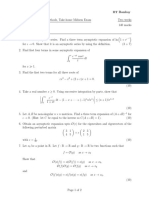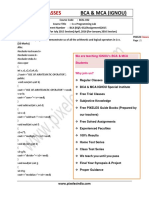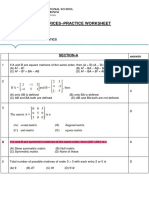0% found this document useful (0 votes)
131 views4 pagesMatrices Notes
Matrices are rectangular arrays of numbers arranged in rows and columns. They are fundamental tools used across many disciplines including mathematics, physics, engineering, and economics. A matrix has a specified order (size) denoted by the number of rows and columns. Matrices can be added, subtracted, multiplied by scalars or other matrices depending on their dimensions. There are several types of matrices including row, column, square, zero and identity matrices. Matrices have important applications in areas such as linear algebra, computer graphics, data analysis, and network analysis.
Uploaded by
apurba.sapkota2008Copyright
© © All Rights Reserved
We take content rights seriously. If you suspect this is your content, claim it here.
Available Formats
Download as DOCX, PDF, TXT or read online on Scribd
0% found this document useful (0 votes)
131 views4 pagesMatrices Notes
Matrices are rectangular arrays of numbers arranged in rows and columns. They are fundamental tools used across many disciplines including mathematics, physics, engineering, and economics. A matrix has a specified order (size) denoted by the number of rows and columns. Matrices can be added, subtracted, multiplied by scalars or other matrices depending on their dimensions. There are several types of matrices including row, column, square, zero and identity matrices. Matrices have important applications in areas such as linear algebra, computer graphics, data analysis, and network analysis.
Uploaded by
apurba.sapkota2008Copyright
© © All Rights Reserved
We take content rights seriously. If you suspect this is your content, claim it here.
Available Formats
Download as DOCX, PDF, TXT or read online on Scribd
/ 4




